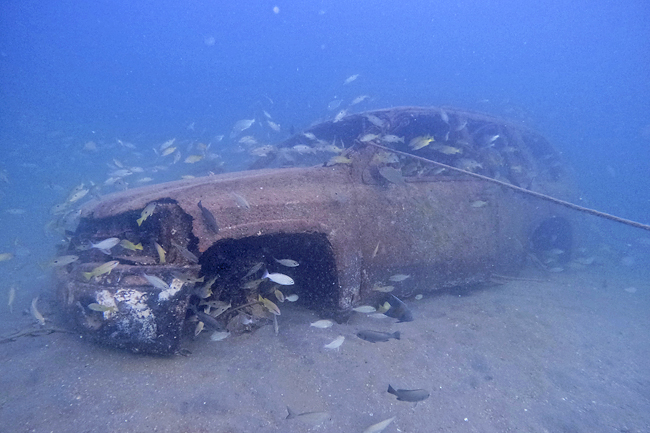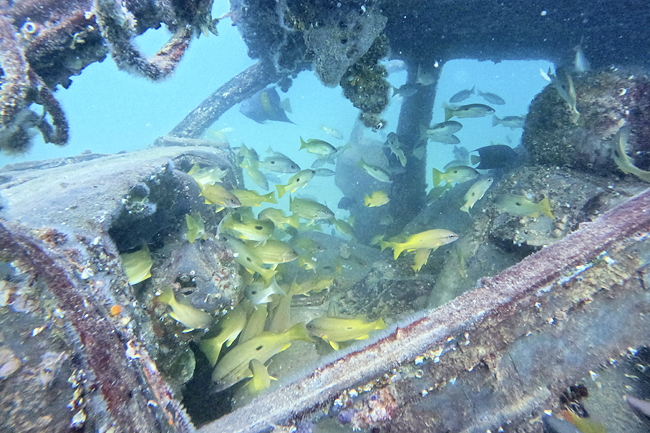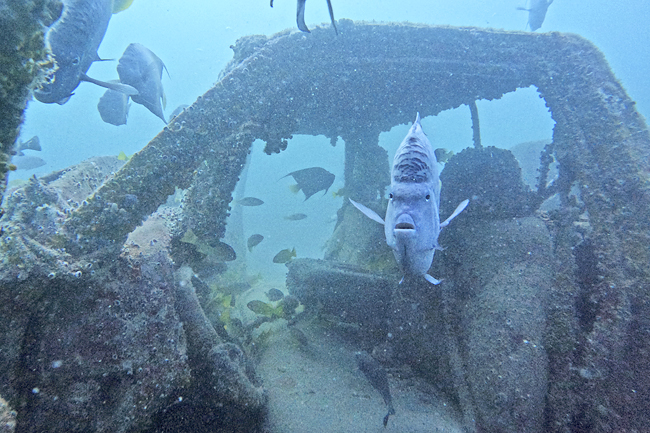MESAIEED, QATAR (AP) – Nine metres deep into the waters of the Persian Gulf, angel fish swim in and out of rusted trucks and SUVs. Plastic bags and water bottles, blown in from the nearby shoreline, float across the ocean floor.
World Cup fans in Qatar hoping to see some of the Gulf’s marine life are visiting the artificial reefs just off the coast of the small, peninsular Arab nation. The underwater installations of stripped-out vehicles, bicycles, concrete blocks and toilets attract divers across the Gulf Arab world and elsewhere.
The discarded structures provide habitats for fish and invertebrates. Fish swarm places that have faced a decline in marine life or never had much – including this strip of ocean near the industrial city of Mesaeeid. Barges and cranes are used to deposit the hollowed-out vehicles around which schools of fish swim.
Urbanisation, fishing and climate change have profoundly disrupted marine life in the Persian Gulf. Artificial reefs attract fish and other marine life, but experts said they can also lead to more fishing, attract invasive species and disrupt ecosystems. Scientists said they do not replace natural reefs.
Near the diving site, SUVs ascend the rolling stand dunes that define the landscape. Groups of tourists riding camels pass by in the distance. Never out of sight are the area’s vast oil refineries. Diving instructors park their SUVs and trucks by the shoreline to bring new groups of visitors to the underwater structures.









